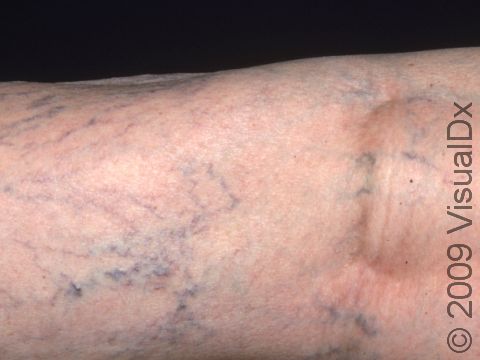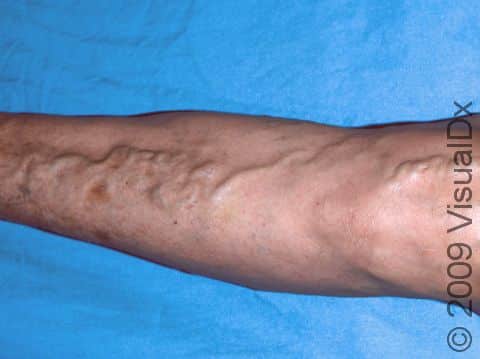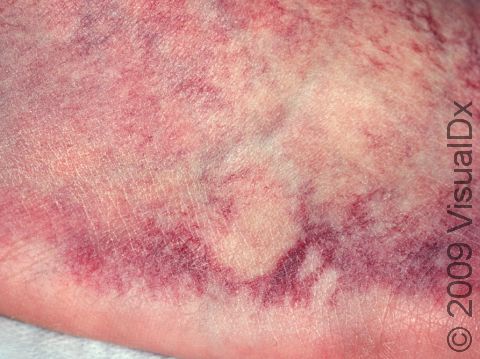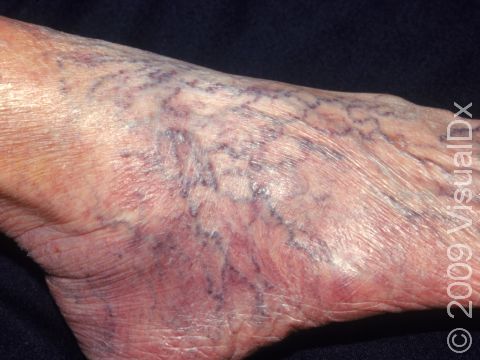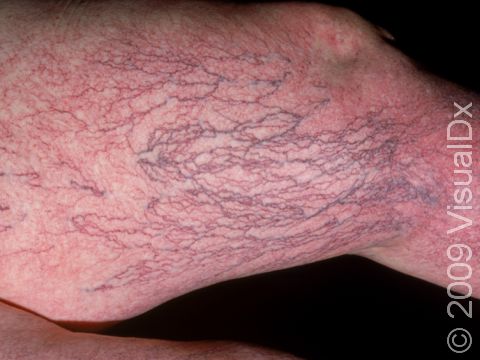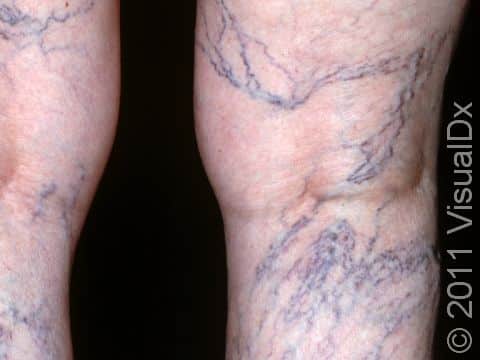Varicose Veins (Varicosities)
Varicosities, most commonly varicose veins, are twisted, enlarged veins at the skin’s surface. The word comes from the Latin word varix, which means “twisted.”
Varicose veins occur due to the malfunction of valves in the deeper leg veins, known as venous insufficiency. This malfunction results in blood backing up in the legs, with the resulting pressure causing surface veins to enlarge.
Who's At Risk?
Varicose veins are common, affecting up to 60% of American adults. Women are more often affected than men.
You are at greater risk if you:
- Are an older adult.
- Have other family members with varicose veins.
- Are overweight.
- Stand for long periods of time.
Varicose veins often first occur during pregnancy, when the growing baby exerts pressure on the leg veins.
Signs & Symptoms
Bulging, cord-like, twisted, soft, blue-to-purple or sometimes green swellings are seen on the legs, anywhere from the groin to the ankle. Many times, there are no other symptoms, but some people complain of burning, throbbing, muscle cramping, swelling, or an achy or heavy feeling in the legs.
Self-Care Guidelines
Wearing compression stockings can help blood return to the heart and give extra support to the damaged veins. This may be challenging, as you need to find the proper kind, and they are tighter and require more effort to put on than regular hose and socks. However, wearing compression stockings is the most important thing you can do and will be required by any medical professional you consult.
For the maximum benefit, compression stockings must be worn every day and put on when first getting out of bed, before gravity has a chance to cause the legs to swell. Nonprescription compression (or pressure) stockings are sold in many pharmacies and medical supply stores. They are also available online. Many styles, colors, and strengths are available. Make sure they fit properly. You may need to measure your leg to ensure a proper fit. For people with arthritis, there are devices to help you put on compression stockings.
To prevent varicose veins from getting worse, you may try:
- Exercising.
- Weight loss, if applicable.
- Avoiding tight clothing, which restricts blood from returning to the heart.
- Elevating your legs when at rest.
- Avoiding long periods of standing.
Treatments
If your medical professional sees any signs of infection or skin breakdown, they may prescribe antibiotics or special dressings.
The medical professional may perform an examination to evaluate the blood circulation in your legs. If there is concern for a blood clot, they may perform an ultrasound.
You may be referred to a vein specialist, called a phlebologist, to discuss treatment options, which may include:
- Sclerotherapy.
- Laser therapy.
- Radiofrequency treatment.
- Surgery.
Visit Urgency
See your medical professional if compression stockings do not improve your symptoms, if you develop an ulcer (a sore that is missing skin), or if you have severe swelling or pain in your leg.
Also see a medical professional if you are concerned with how the veins appear and are considering having them removed.
Trusted Links
References
Bolognia J, Schaffer JV, Cerroni L. Dermatology. 4th ed. Philadelphia, PA: Elsevier; 2018.
James WD, Elston D, Treat JR, Rosenbach MA. Andrew’s Diseases of the Skin. 13th ed. Philadelphia, PA: Elsevier; 2019.
Kang S, Amagai M, Bruckner AL, et al. Fitzpatrick’s Dermatology. 9th ed. New York, NY: McGraw-Hill Education; 2019.
Last modified on June 20th, 2024 at 6:43 am

Not sure what to look for?
Try our new Rash and Skin Condition Finder
